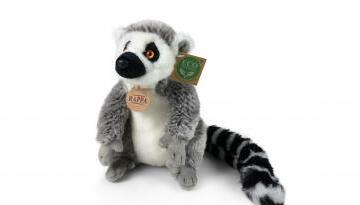29.04.2021 18:30 Date: April 23, 2021 Location: Tags: , , , ,
29.04.2021 18:30 Date: April 23, 2021 Today’s Doodle artwork, illustrated by Barcelona-based guest artist , commemorates the consonant Ñ . The only letter in the Spanish alphabet that originated in Spain, the Ñ is not only a letter but a representation of Hispanic heritage and identity as well. The Ñ’s story started with 12th-century Spanish scribes. While hand-copying Latin manuscripts, these scholars of the Middle Ages devised a plan to save time and parchment by shortening words with double letters. They combined the two figures into one and scrawled on top a tiny “n”—a symbol now known as a ”virgulilla” or tilde—to signify the change. Thus, “annus,” Latin for “year,” evolved into the Spanish “año.” In 1803, it was officially entered into the Royal Spanish Academy’s dictionary, and in 1993, Spain passed legislation to protect its inclusion in computer keyboards on the grounds of its insuppressible cultural significance. In 2010, the United Nations declared April 23 a day to annually celebrate the Spanish language, one of the most commonly spoken in the world. Today, the letter Ñ appears in more than 17,700 Spanish words, carving out a fundamental role within the language and Hispanic culture. Guest Artist Q&A with Min Today’s Doodle was illustrated by Barcelona-based guest artist . Below, they share their thoughts behind the making of this Doodle: Q: Why was this topic meaningful to you personally? A: I'm a typography lover, so it felt special to celebrate a character so rarely used in languages other than Spanish. Q: What were your first thoughts when you were approached about the Doodle? Did you draw inspiration from anything for the artwork? A: My first thoughts were… Dream project! For the artwork, I was most inspired by geometric shapes and Spanish-speaking countries’ flag colors. Q: What message do you hope people take away from your Doodle? A: Language is a live organism and a part of our identity. Our differences are what make us unique. Additional concepts and drafts of the Doodle Location: , , , , , , , , , , , , , , , , , , , , , , Tags: , , , , ,
29.04.2021 18:30 Date: April 22, 2021 This year’s annual Earth Day Doodle highlights how everyone can plant the seed to a brighter future—one sapling at a time! The planet we call home continues to nurture life and inspire wonder. Our environment works hard to sustain us, which calls for us to return the favor. Today’s video Doodle shows a variety of trees being planted within natural habitats, one of the many ways we can do our part to keep our Earth healthy for future generations. This Earth Day—and everyday—we encourage everyone to find one small act they can do to restore our Earth. It’s bound to take root and blossom into something beautiful. Happy Earth Day 2021! Earth Day is a reminder that everyone can contribute to a better planet. to restore trees, oceans, and wildlife—with a little help from Google. Doodler Q&A with Sophie Diao Q: Why is Earth Day meaningful to you personally? A: Earth Day is special every year, but this year in particular I’ve grown to appreciate the grounding influence of trees. A big part of each day for me is looking out my window and admiring the variety of species – bronze loquat, bougainvillea, jacaranda, sweet michelia, wisteria, and more— that make up the urban forest of the street I live on. As each year passes, I’ve looked forward to seeing them bloom, leaf out, and grow a little bit taller. On the flip side, every year we experience catastrophic climate events that remind us what happens when we neglect to care for the planet. Earth Day is a chance for all of us to take a step back from our day-to-day lives and look at the bigger picture, to take a deep breath and remember that we’re a part of nature. Q: What was it like to create this Doodle? Tell us more about your creative process. A: I knew I wanted to create a narrative about the importance of trees, so I started by researching everything I could about reforestation techniques and best practices. I was inspired by the stories of people who had planted trees when they were very young and cared for them throughout their lives, and people—sometimes as a community, other times working individually—who made it a goal to reforest a place, whether it be one the densest cities in the world or an arid desert that used to be lush and green. Once I had the seed of the idea of animating a little girl growing old with a tree, the rest of the Doodle story fell into place very naturally. One person can pass a sapling to someone else, and trees can sustain through many generations of human lives. Even if each person just plants one tree, if you share it with enough people, eventually you can create an entire forest. Q: What message do you hope people take away from your artwork? A: That your contribution can make a big difference. We have the power to grow a better future if we work together. Early sketches and drafts of the Doodle Earth Day 2021 Team ART Doodle Artist: Sophie Diao Additional Tree Animation: Helene Leroux, Ben Tobias PRODUCTION Music Composition: Marketing & Partnerships: Perla Campos, Sierra Menzies Business Affairs & Partnerships: Madeline Belliveau Program Manager: Lindsay Elgin Team Leads: Jessica Yu, Brain Kaas Location: Tags: , , , , ,
29.04.2021 18:30 Date: April 20, 2021 Today’s video Doodle, created by Atlanta-based guest artist , celebrates the 70th birthday of multi-platinum, Grammy Award-winning singer, songwriter, and producer Luther Vandross—the “Velvet Voice” whose silky-smooth tenor ballads romanced generations with inimitable style and grace. Born on this day in 1951 in New York City, Luther Ronzoni Vandross grew up inspired by soul music giants such as Diana Ross, Aretha Franklin, and Dionne Warwick. At the age of five, he showed a sharp interest in singing, often using the coin-operated recording booths found in stores sprinkled throughout New York City at the time. He truly knew music was his destiny after a Warwick performance blew him away at 13—so he began to write his own songs. After high school, Vandross showcased his tunes at Amateur Night at Harlem’s Apollo Theater. Although he never won first place, he joined the theater’s performing arts group “Listen My Brother Revue,” who sang on the 1969 pilot episode of the children’s show “Sesame Street” and gave Vandross his first taste of widespread exposure. Vandross’s next big break came when his original composition “Everybody Rejoice” was featured in “The Wiz,” a 1974 Broadway musical later adapted into an Academy Award-winning film. From there, Vandross launched himself into dozens of collaborative projects with artists like David Bowie, Ringo Starr, Whitney Houston, and Ben E. King. His knack for infectious hooks also landed him gigs singing commercial jingles for Juicy Fruit and several other major brands. In 1981, Vandross launched his solo career and took full creative control to compose, write, and produce his debut studio album “Never Too Much”—the soundtrack of today’s Doodle and the first of 14 studio albums that went either platinum or multi-platinum! A fine-tuned maestro of performance, Vandross took his passionate songs on world-wide tours, where he poured his style into all aspects of live production, from the design of background singers sparkling gowns to the mood-setting stage lights. In 1989, Vandross’s devotion to the live experience set an international milestone when he became the first male artist to sell out 10 consecutive shows at London’s Wembley Arena. Vandross’s successful music career culminated in eight Grammy Awards , a Star on the Hollywood Walk of Fame, a 1997 Super Bowl half-time show performance, and eight Billboard Top 10 albums. Happy birthday, Luther Vandross! The joy your music brings to the world is never too much. Special thanks to the family of Luther Vandross for their collaboration on this project. Below they share their thoughts on the Doodle and Luther Vandross’s legacy. It is a true reflection of Luther Vandross’s musical legacy around the world to be honored by Google with an animated video Doodle that fittingly captures the joy Luther has brought the world. Luther made each of his songs about one simple, universal subject—love; an emotion and feeling common to the human experience no matter who you are, where you’re from or what you look like. No one else has expressed this emotion, in song, at the level Luther did for over 35 years. To have Google broadcast that around the world is a wonderful showcase of his immeasurable talent. Guest Artist Q&A with Sam Bass Today’s Doodle was illustrated and animated by Atlanta-based guest artist . Below, he shares his thoughts behind the making of this Doodle: Q: Why was this topic meaningful to you personally? A: Luther Vandross brought happiness and joy into so many people's lives through his music. His songs are iconic and internationally known. During a time with so many horrible things in the news, it's great to get to do something like this. Q: Did you draw inspiration from anything in particular for this Doodle? A: I'm personally inspired by color. I love the things that you can do visually with contrast, saturation, and hue. For this Doodle, I wanted to make color an important part of the visual story. Starting with a nightlife palette, then moving into a sunrise/golden hour palette, a mid-day to early afternoon palette, and then back to the nightlife palette for the grand finale concert. Q: What message do you hope people take away from your Doodle? A: Joy. While working on this project I had a lot of feelings, but the main one was joy. It was so much fun getting to figure out ways to make each moment in the video feel intimate and a part of the overall story. I was creating small vignettes about togetherness, all types of love, nostalgia, and happiness—all while listening to an iconic song on repeat! Early sketches and drafts of the video Doodle below . Luther Vandross Doodle Team Art Director | Angelica McKinley Guest Artist | Program Managers | Colin Duffy, Greg Capuano and Lindsay Elgin Marketing & Partnerships | Sierra Menzies, Perla Campos Business Affairs & Partnerships | Madeline Belliveau Music Legal Manager | Joy Edgar Doodle Team Leads | Jessica Yu, Brian Kaas Location: , , , , , , , Tags: , , , , , ,
18.04.2021 21:20 Date: April 19, 2021 Today’s Doodle celebrates Russian surgeon, professor, poet, and author Dr. Vera Gedroits on her 151st birthday. Dr. Gedroits is credited as the country’s first female military surgeon and one of the world’s first female professors of surgery, who saved countless lives through her fearless service and innovations in the field of wartime medicine. Vera Ignatievna Gedroits was born on this day in 1870 into a prominent family of Lithuanian royal descent in Kiev, then part of the Russian Empire. In her late teens, she left Russia to study medicine in Switzerland. Dr. Gedroits returned home at the turn of the 20th century, and she soon began her pioneering medical career as the surgeon at a factory hospital. When the Russo-Japanese War broke out in 1904, Dr. Gedroits volunteered as a surgeon on a Red Cross hospital train. Under threat of enemy fire, she performed complex abdominal operations in a converted railway car with such unprecedented success that her technique was adopted as the new standard by the Russian government. Following her battlefield service, Dr. Gedroits worked as a surgeon for the Russian royal family before her return home to Kiev, where she was appointed professor of surgery at the University of Kiev in 1929. She authored several medical papers on nutrition and surgical treatments during her time as a professor, but her talent as a writer was not limited to academics. Dr. Gedroits also published multiple collections of poems, and several nonfiction works, including the 1931 memoir simply titled “Life,” which told the story of her personal journey that led to service on the front lines in 1904. Thank you, Vera Gedroits, for pushing the world of medicine forward, even with the odds stacked against you. Location: , , , , , , , Tags: , , , , ,
16.04.2021 14:40 Date: April 17, 2021 Newton’s second law of motion states that an object’s acceleration is dependent on two variables: the force acting on the object and its mass. Apply this law to the momentum of women in science, and Italian physicist and professor—Laura Bassi—arises as a primary force for propelling scientific progress forward. On this day in 1732, Bassi successfully defended 49 theses to become one of the first women in Europe to receive a PhD. Today’s Doodle celebrates Laura Maria Catarina Bassi, who was born in Bologna, Papal States in 1711. A child prodigy, she was debating top academics on the history of philosophy and physics by 20; a rare achievement at a time in which women were largely excluded from higher education. By 1732, Bassi was a household name in Bologna, and following her thesis defense, she became the first female member of the Bologna Academy of Sciences, one of Italy’s foremost scientific institutions. Due to gender discrimination, her position at the Academy was limited, yet she persisted. Bassi apprenticed under eminent Bologna professors to learn calculus and Newtonian physics, a discipline she spread across Italy for almost 50 years. A lifelong teacher of physics and philosophy, she complemented her education with innovative research and experiments on subjects ranging from electricity to hydraulics. Bassi continually fought for gender equality in education throughout her trailblazing career; efforts that culminated in 1776 when the Bologna Academy of Sciences appointed her a professor of experimental physics—making Bassi the first woman offered an official teaching position at a European university. Here’s to you, Laura Bassi! Location: , , , , , , , , , , , , , Tags: , , , , , , , ,
15.04.2021 00:35 Date: April 15, 2021 Today’s Doodle celebrates Eugène Poubelle, the French lawyer, administrator, and diplomat credited with revolutionizing Paris’s waste management system in the late 19th century. Never afraid to get his hands dirty, Poubelle is forever immortalized in the French word for the trash can: la poubelle. Born in Caen, France on this day in 1831, Eugène René Poubelle earned a law degree and began his career as a professor before transitioning into public service. In 1883, he was appointed prefect of the Seine, and he soon came to the conclusion that Paris needed to clean up its act. In 1884, Poubelle decreed that Parisian landlords were required to install large, covered receptacles for their tenants’ household trash, and—far ahead of his time—he even mandated three separate bins to facilitate recycling. In 1890, la poubelle was officially inducted into the French dictionary as the term for “garbage can.” But Poubelle didn’t stop there. Following a severe cholera outbreak in 1892, he also required all buildings to be connected directly to the city’s sewers, another huge step in the name of urban hygiene. Poubelle’s mandates also catalyzed the development of household waste removal vehicles, early versions of which came in the form of horse-drawn carriages. With the advent of the first automobiles, these prototypical garbage trucks evolved into motorized vehicles in 1897; by the dawn of the 20th-century, this sanitation technology cleared the path for garbage collection to become commonplace not just in French urban centers but nationwide. Thank you, Eugène Poubelle, for refusing to let your visionary ideas be thrown out! Location: Tags: , , ,
15.04.2021 00:35 Date: April 15, 2021 Location: Tags: , , ,
14.04.2021 23:34 Date: April 15, 2021 Today’s Doodle celebrates Israel’s Independence Day, known locally as Yom Ha’atzmaut. On this day in 1948, the State of Israel declared its independence. Annually onYom Haz’Zikaron, many Israelis take the day to celebrate and reflect on their national sovereignty by firing up mangals . It is tradition to cook local foods like shishlik ; a meal which fills the air with a savory aroma as the flames are fanned with a nafnaf . Blasts from the ancient shofar, a trumpet made from a ram’s horn, can be heard as Israel’s blue and white flag flies proudly in the sky—as depicted in today’s Doodle artwork. Officially adopted in 1948, the same year as independence, the flag is waved proudly wherever Israeli’s call home. Happy Yom Ha’atzmaut, Israel! Location: Tags:
14.04.2021 02:00 Date: April 14, 2021 Today’s Doodle, illustrated by Lagos-based guest artist , pays tribute to Nigerian musician Oliver de Coque on his 74th birthday. Crowned the “Highlife King of Africa,” he is widely revered as one of the continent's most prolific recording artists. Born on this day in 1947 in the small town of Ezinifite in southeastern Nigeria, Oliver Sunday Akanite first took up the guitar at a young age, and as a teenager, studied the traditional Igbo music of the region and Congolese soukous. In 1970, at a performance by the popular Sunny Agaga and his Lucky Star Band, Akanite convinced Sunny to let him stand in as their guitarist; he was hired on the spot, providing a massive boost to his young career. Also a skilled player of the Nigerian board game okwe, Akanite became known as “Oliver de ka Okwe,” which he later adapted into his stage name, Oliver de Coque. De Coque famously infused the modern West African highlife genre with a Congolese-influenced guitar style and the energetic dance elements of Igbo music he grew up with, crafting a unique musical style, which he called Ogene. Beginning with his first solo release in 1976, de Coque’s music only grew in popularity at home and abroad, as he put out album after album featuring his masterful guitar work and fresh take on African pop–over 70 throughout his lifetime. In 1994, in recognition of his prodigious music achievement, de Coque was awarded an honorary doctorate in music by the University of New Orleans. Thank you, Oliver de Coque, for strumming your way into the hearts of listeners around the world! Guest Artist Q&A with Ohab Tochukwu Today’s Doodle was illustrated by Lagos-based guest artist . Below, he shares his thoughts behind the making of this Doodle: Q: Why was this topic meaningful to you personally? A: Oliver De Coque was a popular musician from the Igbo part of Nigeria. As a kid back in the early 90's, I remember my late dad playing his songs, but back then I didn’t understand the lyrics nor the message they carried. But I never forgot watching my uncles and aunties dance to his music, and their happiness was contagious. Q: Did you draw inspiration from anything in particular for this Doodle? A: Although I've always been familiar with Oliver De Coque's music, I did more research to try to understand the late artist more. I noticed in particular Oliver De Coque's love for the guitar, his energy while performing, his unique style of music, as well as his love for his tradition and culture - all of which inspired the Doodle art. Q: What message do you hope people take away from your Doodle? A: I believe that Oliver De Coque paved the way for so many African artists of this generation. I also believe that there's much more to the late high-life artist than we know, and that history hasn't done enough to honor his memory. My hope is that this Doodle can highlight his story. Early concepts and sketches of the Doodle Location: Tags: , , , , , ,
13.04.2021 20:50 Date: April 14, 2021 Today’s Doodle commemorates the festival of Pohela Boishakh, which falls on the first day of the Bengali calendar. Whether at home or abroad, Bengalis worldwide warmly greet each other with, Shubho Noboborsho, the customary way to wish each other a prosperous and happy New Year. One of the most traditional Pohela Boishakh celebrations commences after dawn underneath an ancient Banyan tree at Dhaka’s Ramna Park. Mangal Shobhajatra is a radiant carnival procession that begins at the Institute of Fine Arts at Dhaka University. The festive spirit blends young and old, as they wear colorful masks and parade with massive cutouts of animals as a way to symbolize Bengali cultural diversity, heritage, and identity of the people. The nation celebrates with street parades, fairs, and grand concerts as a way to unify the Bengalis to welcome another year to come. Shubho Nobobarsho! Location: Tags: , , , , ,
13.04.2021 15:17 Date: April 14, 2021 When it comes to first impressions, no other historical figure made one quite like the inventor of the mechanical movable type printing press: German craftsman Johannes Gutenberg. This revolutionary technology made the knowledge found in books both affordable and accessible to the common person for the first time in history. Today’s Doodle celebrates Gutenberg on the anniversary of this day in 2000 when the Gutenberg Museum launched a retrospective exhibition in his honor. Although much of Gutenberg’s life is shrouded in mystery, historical records indicate he was born circa 1400 in Mainz, Germany, and first made his living as a metalworker in the goldsmith trade. By the late 1430s, historians believe Gutenberg began to develop a more efficient text printing device in an attempt to pay off debts from a failed mirror business. The machine he invented replaced the hand-carved wooden letter and graphic blocks of traditional printers for easily-cast metal type, which were then dipped in proprietary ink to print entire pages at once. Gutenberg’s next eureka moment came in 1450 with his invention’s first successful print: a Latin book on speech-making. From here, Gutenberg was off to the races as he innovated labor by hiring an assembly-line team to produce books quicker than ever! A testament to the power of human creativity, the Gutenberg press printed up to 3,600 pages on an average workday, fueling the first large-scale production of books in Europe. By the 16th century, an estimated 200 million books were in print thanks to his invention, which gave birth to a new era of mass communication and a new branch of media: the press. Today, Gutenberg’s legacy lives on with Project Gutenberg, an online library with over 60,000 free books. Thank you, Johannes Gutenberg! Location: Tags: , , , , , , , ,
13.04.2021 07:43 Date: April 13, 2021 Location: Tags: , , ,
12.04.2021 14:50 Date: April 13, 2021 In honor of a storied legacy of cultural enrichment for New Yorkers and international communities alike, today’s Doodle celebrates the 151st Anniversary of the Metropolitan Museum of Art. The Metropolitan Museum of Art was founded in 1870 by a group of American citizens—businessmen and financiers as well as leading artists and thinkers of the day—who wanted to create a museum to bring art and art education to the American people. On this day in 1870, the museum was officially incorporated and soon after acquired its first work of art: a Roman sarcophagus. The Met has come quite a long way from that first showing to become New York’s largest art museum, with a permanent collection of over 1.5 million objects, spanning over 5,000 years from nearly every corner of the globe. A sampling of the many works of art found at The Met today are depicted in today’s Doodle artwork—including a Byzantine floor mosaic from 500-550 A.D., the armor of German Emperor Ferdinand I from the 16th century, an intricate traditional Lakota/Teton Sioux beaded dress, and the painting Self-Portrait by Samuel Joseph Brown, Jr. from the 1940s. Whether you're a Met regular or planning your first trip to the Museum, be sure to visit a certain blue ceramic hippopotamus from Egypt’s Middle Kingdom nicknamed “William.” An unofficial mascot of The Met, he might soon become your favorite part of the collection. Happy anniversary to The Met–and here’s to many more! Visit the for a closer look at the artworks featured in today’s Doodle. Take an immersive online journey through ‘ ’’ on Google Arts & Culture to learn more about the history, people, and artworks that make the museum what it is today. Doodler Q&A with Erich Nagler Q: How did you first learn about the Metropolitan Museum of Art? What part of the museum's story do you find most inspiring personally? A: I was fortunate enough to attend art school in New York, and from the beginning the Met was a treasure trove for both study and inspiration. I think it was my freshman art-history teacher who took our class for my first visit. Every exhibition hall seemed designed to transport you to . Turn a corner and you are in medieval Europe, then in ancient Japan, then in sub-Saharan Africa. Sometimes, on solo visits, I would wander the galleries with earplugs in, tuning out all the other visitors and simply soaking in all of the visual splendor. A more secluded part of the collection I find particularly inspiring is , located at the very northern tip of Manhattan. This part of the museum is housed in ancient French monasteries and abbeys. Visiting feels like such a calming departure from the hustle and bustle of the big city. The from the late Middle Ages are there, which I included as a yellow “o” in the Doodle animation. Q: What was your creative process for this Doodle? Did you draw inspiration from anything in particular? A: I actually began working on this Doodle last year, to celebrate the Met’s 150th anniversary, but had to postpone due to the pandemic. I haven’t yet been able to visit the museum since then, so my goal for the Doodle was to try and recreate the feeling of visiting the museum from numerous past visits. I started by sketching a bunch of artworks from the museum’s fantastic . As I was drawing, some of the artworks and artifacts reminded me of the Google letterforms. It was hard to tell the museum’s story visually without including the landmark building as well, so I began drawing the architecture of the museum building itself, set against the background of Central Park. Finally, I tried to combine both the museum building drawing with the artwork drawings. The looping animation shows where the artworks are located inside the museum; this captures the serendipity and surprise of wandering the galleries and discovering these beautiful masterpieces. Now that many museums are re-opening with safety precautions in mind, it feels like the right moment to celebrate one of the world's most iconic art institutions. Q: The Met is home to over 1.5 million pieces of art from all around the world. Is there a specific masterpiece that resonates with you? A: It is impossible to choose just one! The magic of the Met comes from the vast diversity of its collection, not from any singular treasure. As a young art student, I was particularly inspired by the museum’s collection, including the awesome and of course . I knew I wanted to include an Egyptian artifact in the Doodle somehow, and so I chose the magnificent to represent an “L” in the Doodle. I love the exquisite painting and fascinating symbolism on the coffin. I am grateful that the museum continues to preserve and protect this three-thousand-year-old masterpiece for future art students and everyday museum-goers alike. Q: What do you hope people will take away from this Doodle? A: I have really missed visiting museums during the pandemic, so working on this Doodle was for me like a virtual visit to the Met. I hope that this animated Doodle gives people a little experience of touring the museum, and coming face-to-face with beautiful and captivating art objects from so many different cultures and eras. Location: , , , , , , , , , , , , , , , , , , , , Tags: , , , , , , ,
12.04.2021 06:41 Date: April 12, 2021 Location: Tags: , , ,











